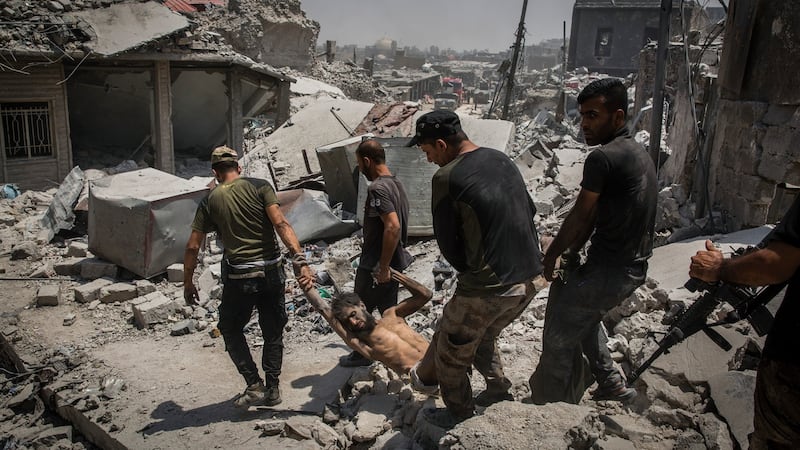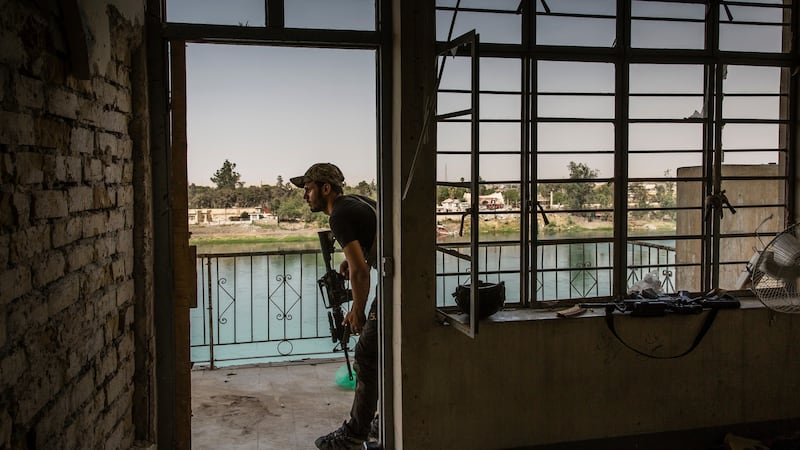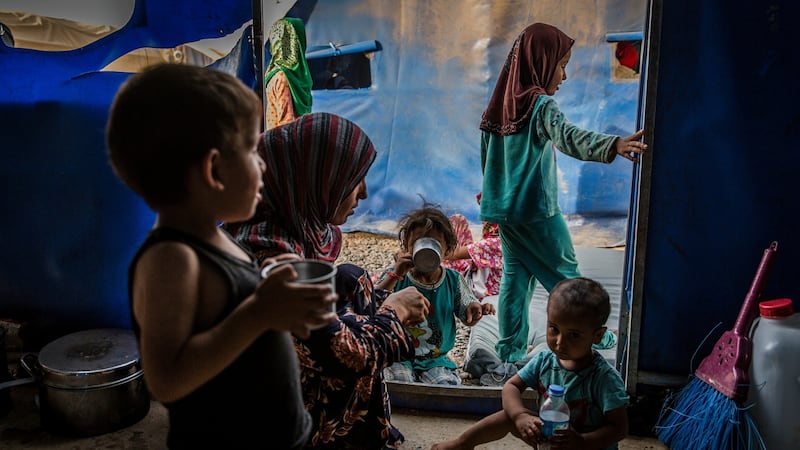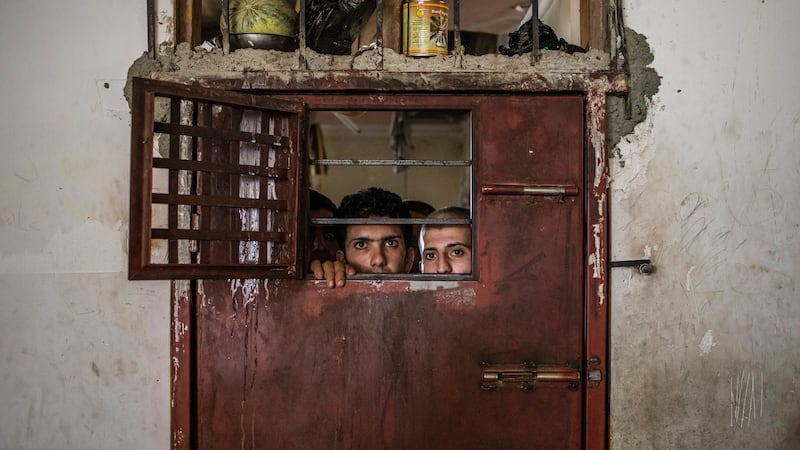Days after the Iraqi government officially declared victory over Islamic State in Mosul in early July, the fighting was far from over. Roughly the size of a block in Manhattan, the last Isis holdout of the Old City did not seem like the kind of place where anyone could still be alive after weeks of brutal combat. But a few such areas kept up the fight for days. And – horribly, amazingly – civilians were still being pulled out.
What we saw as we went step by step with the Iraqi forces here made their survival seem even more miraculous. At a forward base near the front line, Iraqi special operations forces soldiers brought in a man who had crossed the front line, holding a young boy no more than two years old. Wearing just a bloodied vest and a dirty pair of shorts with no shoes, the man did not even know who the child was. He was immediately suspected of being an Isis fighter who had merely used the boy as a human shield.
The troops took the man away, and the commander in charge held the boy on his lap. Doubting that the boy’s parents could still be alive, he decided that one of his men – he knew that the soldier and his wife had been unable to have children of their own – should adopt the boy.
On the battlefield, some of the men washed the child and his tattered clothing before the officer arrived to meet his new son.

A squad of special operations forces soldiers near the front line of continued clashes in the Old City began to shout that they had found an injured militant in the basement of a shattered building. A few of the men hauled the emaciated fighter out of the basement into the street. He was barely alive, injured during a battle several days before.
He said that his name was Malik, and that he was a 36-year-old resident of Mosul. He was so weak it was hard to imagine him being a capable fighter at any point recently. The commander ordered him to be taken to a doctor, and the men carried him away across the mounds of rubble and around the corner, out of sight.
Bodies discovered
While searching one building’s courtyard, soldiers came across the bodies of up to 10 men, dead for probably more than a week. It was impossible to verify what had happened or even who they were, although the soldiers immediately proclaimed that they had been members of Islamic State.

At least two of the bodies appeared to have their hands tied behind their backs. Whether they were captives of Islamic State who died in a shootout or Isis prisoners who were summarily executed it was impossible to say. But this last stage of the battle, often taking place under a media blackout, has been punctuated by rumours of extrajudicial killings by the security forces.
After days of continued fighting, the sounds of gunfire and warplanes finally stilled over the Old City. The last trickles of survivors seemed to end. The sand-coloured skeletons of the homes had become a graveyard for the last few Isis fighters, and for anyone else trapped along with them. But the homes all still had to be searched. The Iraqi special operations forces began picking through mounds of pulverised rubble, sometimes two stories high, in Islamic State’s last bastion.
Among the survivors who got out before the battle’s final chapter, at the beginning of July, was a 30-year-old woman named Shayma, along with her children and her mother. They were staying at a camp for displaced people in Hamam al-Alil, a town just south of Mosul.

She had been married to an Isis fighter. He had joined soon after the militants took control of Mosul and its surroundings in 2014. They needed the money, she said, for the house they were building in the town of Qaiyara. As Iraqi forces began closing in on Mosul last year, the militants forcibly moved Shayma’s family, and those of other fighters, into western Mosul.
She said her husband had been killed in an air strike nearby during the fighting in March. Now a widow, and tarnished for having married a known member of Islamic State, she despaired of finding a way to care for her children and mother.
Back streets
The operation to clear the Old City of explosives and search for anyone still hiding is continuing. The men doing the job are moving slowly through the narrow back streets, checking every house and basement for Isis holdouts, though the odds of finding any alive dwindle by the day.

On the outskirts of the city, thousands of men accused of having joined or helped Islamic State await their fates in sweltering and cramped jails. They stared out at me as we walked the halls. Earlier, I had met other survivors from the Old City. While the fighting was still going on in mid-July, I encountered about 20 women and children sitting in a destroyed shop in the Maydan district, just a few hundred yards from the remaining battlefield.
They were covered in dust, and many had been injured. Just that morning they had fled while under fire from Islamic State snipers. The Iraqi soldiers said three from the group had been killed. Most were obviously traumatised. They sat silently, drinking the water and eating the food the soldiers brought to them.
Some of the children in the group had lost their parents and had come out with other families. One woman said she had been married to four different Isis fighters, and the colonel who commanded the counterterrorism units in the area was questioning her about one of them. She had been carrying a knife, a tablet computer and nearly $2,000 in American money.

The group was eventually taken away to be questioned further. When asked where the women and children would be taken, the soldiers merely said to a camp. For this group, though, that may well be the special “rehabilitation camp” for the families of Isis members that was detailed in a Human Rights Watch report. The rights group said the families’ detention there amounted to collective punishment and violated human rights.
The toll of the battle for Mosul on nearly every front – human rights, lives, property and Iraqi heritage – is only now starting to come into focus. As the last searches in the Old City wrap up, the almost unfathomable task of rebuilding the city and, somehow, coming to grips with all that happened here, stretches out ahead into the unknown.
New York Times service








